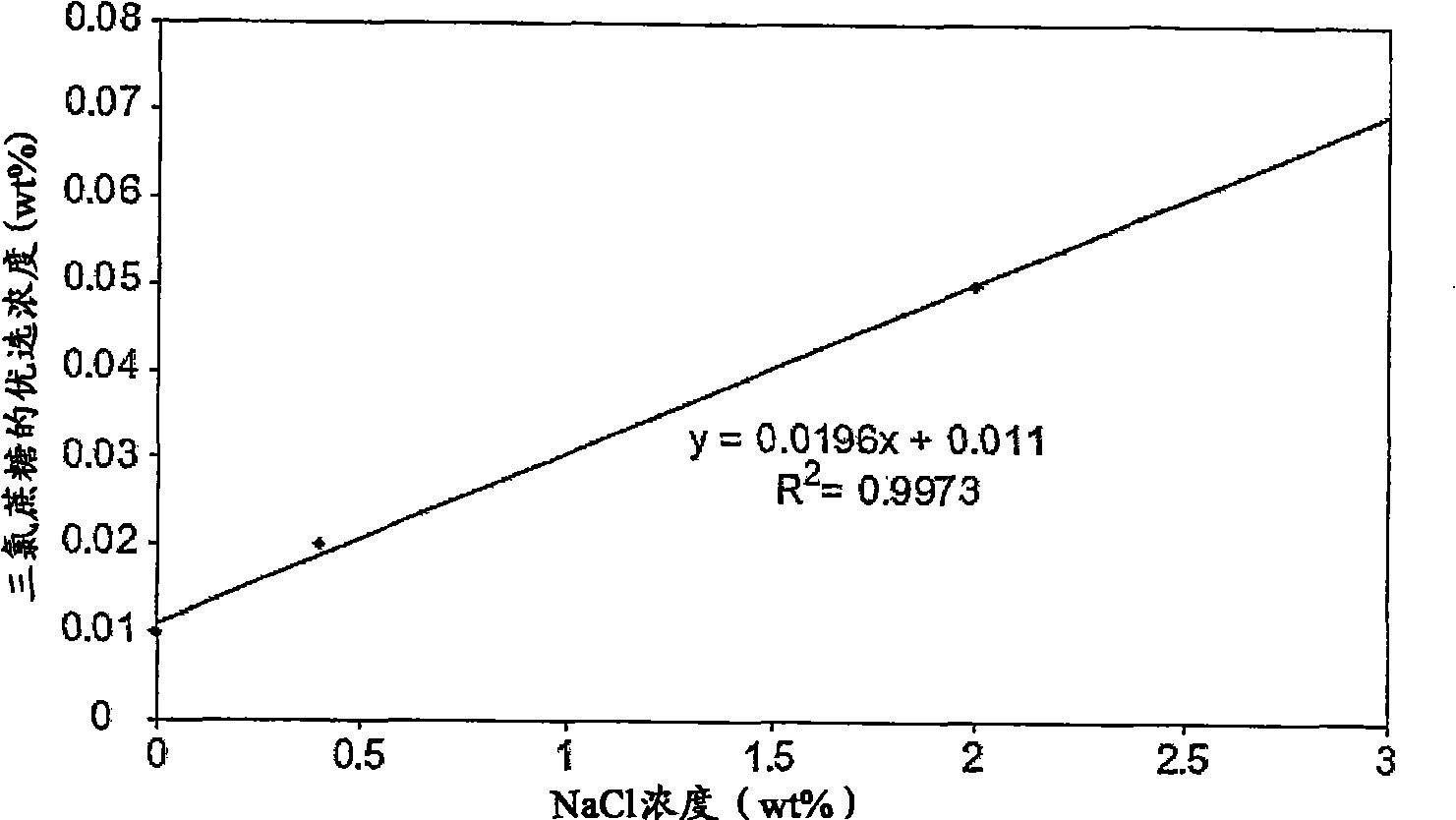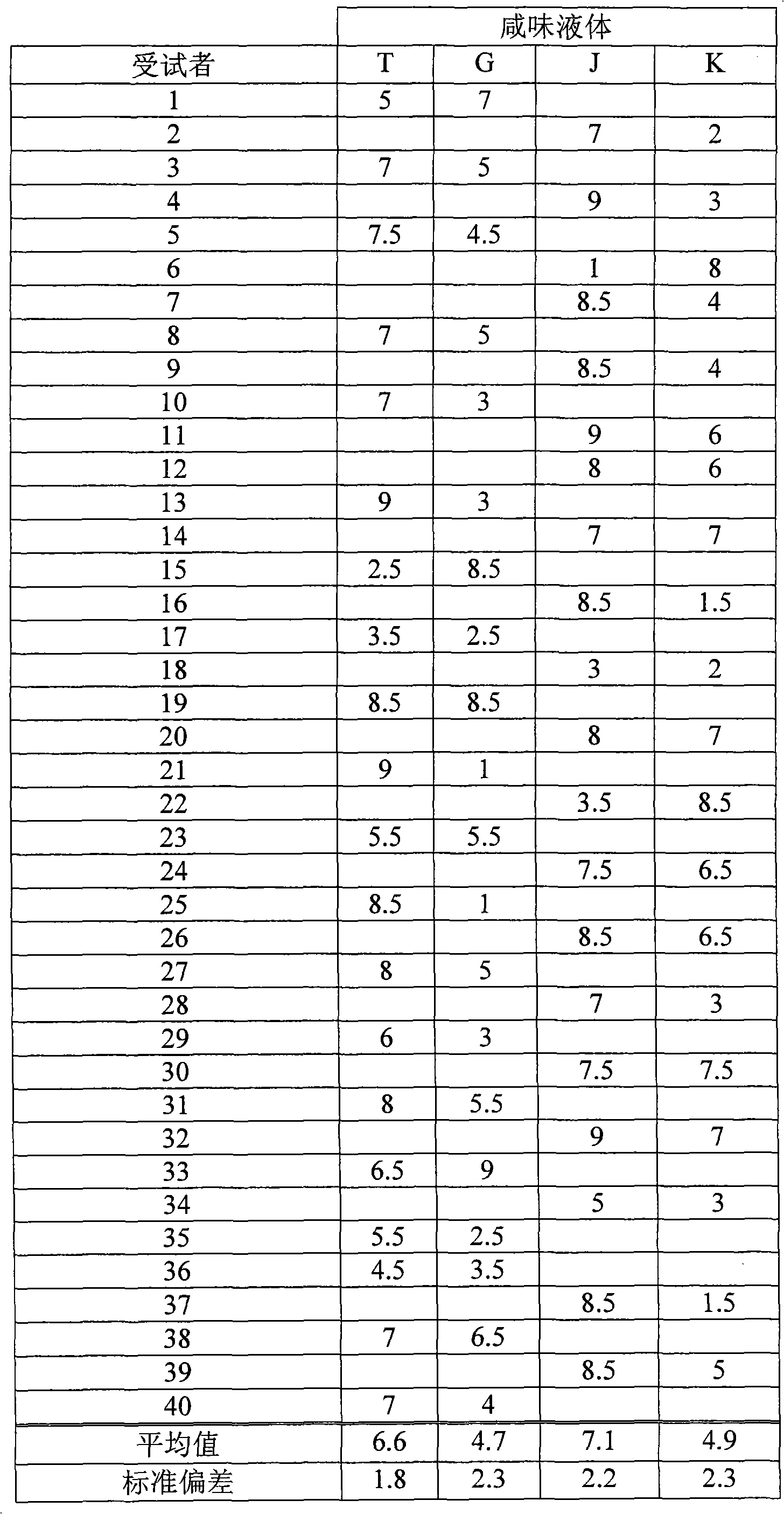Reduction of saltiness with sweeteners
A sweetener and saltiness technology, which is applied to the user's willingness to take a cleaning solution, selected from the isomerization field of chlorinated sucrose, and can solve problems such as intolerance
- Summary
- Abstract
- Description
- Claims
- Application Information
AI Technical Summary
Problems solved by technology
Method used
Image
Examples
Embodiment 1
[0036] Example 1 : Test sucrose, saccharin, sucralose, aspartame, Ace-K, sweet protein (Talin), neohesperidin dihydrochalcone (NHDC) and trehalose in FLEET PHOSPHO-SODA in the stability. Among these sweeteners, sucralose, Ace-K and saccharin were found to have acceptable stability in laxatives. Although other sweeteners retain their effectiveness when blended, their effectiveness decreases over time.
Embodiment 2
[0037] Example 2 : Preparation of phosphate bowel cleansers for optimal comparison. Exemplary compositions were prepared as shown in the table below. Percentages are in weight / weight (w / w).
[0038] Table 1
[0039] components
Embodiment 3
[0040] Example 3 : To determine whether subjects prefer the taste of salty liquids with or without sweeteners, a pleasure-type preference trial was conducted on 40 subjects. Each subject was asked to rate the two saline liquids on a scale of 1 to 9, with 1 being highly preferred and 9 being least preferred. A 2% NaCl / water solution containing 1.29% ginger flavor was prepared.
[0041] The first NaCl / water solution (T in Table 2 below) contained no sweetener, while the second NaCl / water solution (G in Table 2 below) contained 0.13% sucralose. Similarly, unsweetened (J in Table 2 below) and sweetened (K in Table 2 below) phosphate bowel cleansers were prepared. Compared to the phosphate cleanser in Example 2, these cleanses contained 1.3% ginger flavoring instead of cola.
[0042] Table 2
[0043]
[0044] As can be seen from the data in Table 2, subjects preferred the sweet, saline liquid G by about 47% for the 2% saline solution, and about 45% for t...
PUM
 Login to view more
Login to view more Abstract
Description
Claims
Application Information
 Login to view more
Login to view more - R&D Engineer
- R&D Manager
- IP Professional
- Industry Leading Data Capabilities
- Powerful AI technology
- Patent DNA Extraction
Browse by: Latest US Patents, China's latest patents, Technical Efficacy Thesaurus, Application Domain, Technology Topic.
© 2024 PatSnap. All rights reserved.Legal|Privacy policy|Modern Slavery Act Transparency Statement|Sitemap



